This year marks 150 years since the first lessons were held at DMU's predecessor institution, the Leicester School of Art. But it had taken years of effort for Leicester to discover its civic pride to get this ambitious project off the ground, reports award-winning features writer and journalism lecturer Jeremy Clay
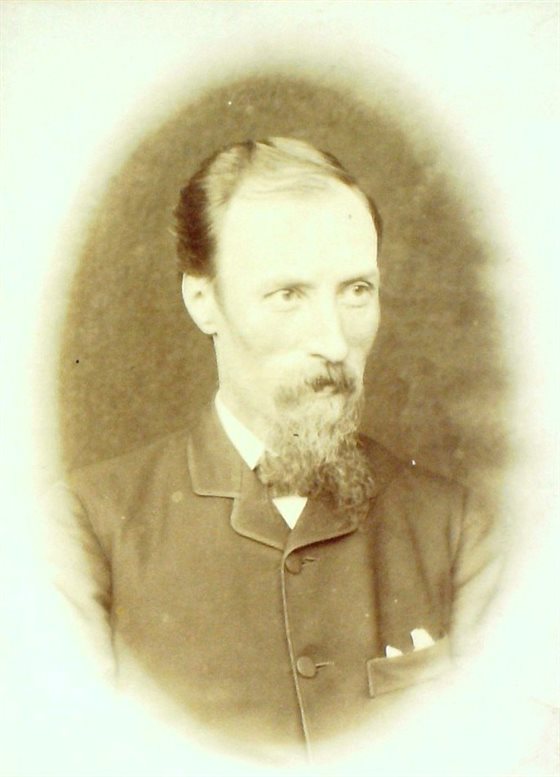
The first headteacher, Wilmot Pilsbury, a landscape painter
It was the kind of day that journalists curse. The sun rose on Tuesday, March 1, 1870, and after a polite interval, it went back down again. And in between, it seems, nothing much of note happened.
At least, that’s the impression you get by leafing through back copies of Leicester’s newspapers from the time. There’s little to catch the eye. An 11-year-old boy was jailed for stealing a watch. Some Sunday school teachers met up for tea in Hinckley. A quantity of butter was inspected by officials on the look-out for the kind of culinary skulduggery that saw unscrupulous bakers add plaster of Paris to their bread, but it was declared fit for sale.
There was a fleeting moment or two of liveliness in Melton market when a cow startled by a dog escaped from its pen and knocked over a woman carrying some bottles, but the excitement – alas - proved short-lived. And that was pretty much that. Humdrum news, from a run-of-the-mill day.
All of which makes it slightly odd that the town’s idling reporters paid no heed to the small scene that took place in a disused warehouse in Leicester that morning, when some well-to-do men and women took their seats in a poorly-lit corner of a disused warehouse for their first lesson in the fundamental principles of drawing.
Granted, that too doesn’t sound like a tale to quicken an editor’s pulse, but there was a reason to cover it: this was the culmination of a saga that had been playing out, off and on, on the pages of the Leicester press for decades. After years of procrastination, punctuated by bursts of enthusiasm and hostility to the idea, Leicester School of Art was finally open for business. And from these unpromising beginnings, an institution was born that would grow into a university that draws students from around the globe.
The story of the roots of De Montfort University begins earlier and elsewhere, amid a very British orgy of handwringing.
Having led the world into the broad, smoke-clogged uplands of the industrial age, manufacturers in the UK had lost their head start, and were facing stiff competition from goods made overseas. A parliamentary committee was set up to consider the problem, under the leadership of William Ewart, the politician who would later come up with the idea for blue plaques (and who, by the by, has two plaque plaques in his honour, neither of which mention he came up with the idea for blue plaques).
The Select Committee on Arts and Their Connexion with Manufactures (sic) was formed in 1835 to “enquire into the best means of extending a knowledge of the Arts and Principles of Design among the people (especially the manufacturing population).” They heard from a succession of witnesses who took it turns to agree that goods made in France tended to be fancier, more sought-after and – mon dieu – far superior to those designed here. “I have never found a good designer in England,” sniffed one merchant to the ashen-faced committee.
Something Must Be Done, it was decided, and that something was to open specialist schools of design in the industrial towns and cities of Britain.
And where better to start than – stop me if you’ve heard this one before –London?
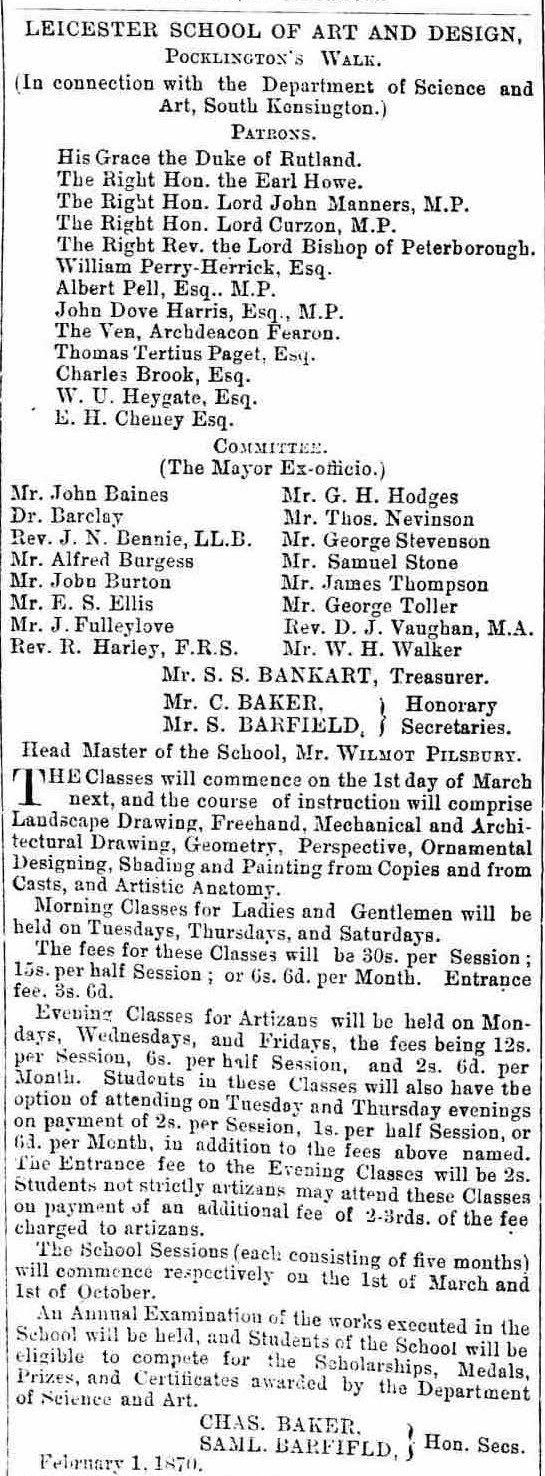
The first advert for Leicester School of Art
The Government School of Design, the precursor to the Royal College of Art, began classes at Somerset House in 1837, sparking a flurry of similar ventures around the nation, including Manchester, Glasgow, Birmingham, Leeds and Leicester’s age-old nemesis, Nottingham.
And Leicester itself? For more than three decades it remained stubbornly unpersuaded of the merits of following suit.
At first, they saw no need. In the 1830s, hosiery manufacturers in Leicester were churning out plain designs for the home market, which were selling quite nicely, thank you very much. But as tastes became a little fancier, the manufacturers feared losing their trade secrets if the know-how was pooled.
Which is not to say art-school aficionados didn’t try to make the manufacturers see sense, nor that every mind was closed to the idea.
In 1847, JA Hammersley, the principal of the Manchester School of Art, breezed into Leicester to evangelise the commercial benefits of good design.
Fired up by his sermon, a local committee was formed, and donations and subscriptions secured to fund a new school, and then, with dizzying speed, nothing at all seems to have happened.
Six years later, a school of art was briefly established at the local Mechanics Institute, but after a promising start, it floundered in the face of Leicester’s fractious political and religious divisions and had disappeared without trace within a few years.
In 1862, back came Hammersley once more, this time full of airy claims about moving to Leicester to do the heavy lifting for us. Again, zilch.
But beneath the surface, something was afoot. Like a teenager going through a comprehensive reinvention on the day they arrive at uni, Leicester was on the cusp of change.
In some ways, mid-Victorian Leicester was virtually unrecognisable from the city of today.
The population had more than quadrupled since the start of the century, and the town was suffering pronounced growing pains. Thousands of homes had no piped water. Children as young as seven were working in the town’s shoe factories and brick yards. And each summer, a foul stench hung over the streets. “An abominable nuisance” a correspondent to the Leicester Chronicle called it. “If something be not done we shall be driven from our homes.” In related news, one in 10 deaths was caused by ‘summer diarrhoea’.
And if Leicester died hard, or loose, perhaps, it lived much the same way too. The courts were awash with the after-effects of widespread drunkenness and disorder. “One notable characteristic of the town's inhabitants was a marked readiness to resort to violence,” tutted the History of the County of Leicester. They could even get riled by a balloon. In 1864, Punch magazine dubbed the townsfolk ‘balloonatics’ after a proposed display of aeronautics by a celebrated aviator somehow ended up in the frenzied destruction of his prized, blameless balloon.
But things were picking up in Leicester. The hosiery industry that was the lifeblood of the town was lifting itself out of a prolonged depression. By 1869, the Rev. Joseph Dare, of the town’s Domestic Mission, could write that “Leicester’s lean stockinger had disappeared.”
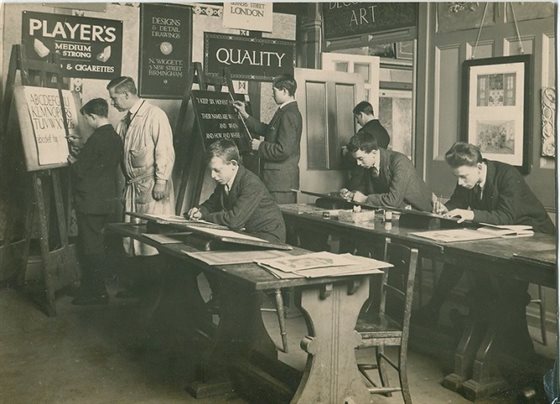
Victorian developers were also starting to take a ruler to Leicester’s more higgledy-piggledy streets, straightening out the remaining medieval folds of the town and steadily replacing tumbledown buildings with grander designs. The Clock Tower was built in 1868. The new Town Hall would take shape in 1876. There was a fresh vigour and confidence about the place, coupled with a burgeoning civic pride.
Yet there was a missing piece in the jigsaw. By the close of the 1860s, nearly every town of importance in the country, and various inconsequential ones too, had a school of art. More than 100 had been set up, and their combined classes boasted more than 20,000 inky-fingered, painted-splattered students. But there was still nothing of the sort in Leicester, the thriving home to more than 90,000 people.
There’d been a shift in thinking too. The initial impulse behind the art school movement was as much economic as aesthetic; to train artists to add a dash of export-friendly ta-da! to the design of the staple goods manufactured in each town. But art schools, a bit like a Hostess trolley in the 1970s, had come to signify taste and sophistication. For the great and good of Leicester, not having an art school in the town had become roughly as embarrassing as being seen out without a hat, if not quite so mortifying as being caught without trousers. “It would be a disgrace,” thundered the Leicester Journal, if a town like this, growing so rapidly in population and importance, should linger behind other places of lesser note and not have an institution of this kind.”
But if Leicester was slow on the draw when it came to setting up an art school, things moved pretty sharply once it had made up its mind to act.
In October 1869, John Charles Buckmaster from the Science and Art Department at South Kensington arrived in Leicester for a public meeting about creating a new school. It wasn’t his first visit. He’d been to the town five years before trying to drum up support for one, he said, but everyone he met “had plenty of excuses with which to evade him,” reported the Leicester Chronicle, “and he thought it best to go home and wait for the proper time to arrive.”
Well, that time was now, he told the audience. After all – and perhaps he paused here, for crowd-pleasing effect - why shouldn’t Leicester have what Nottingham has? Cue thunderous applause. Straight afterwards, a committee was formed, and immediately held their first meeting in the Mayor’s parlour. Right, they all agreed; we’d better get on with this.
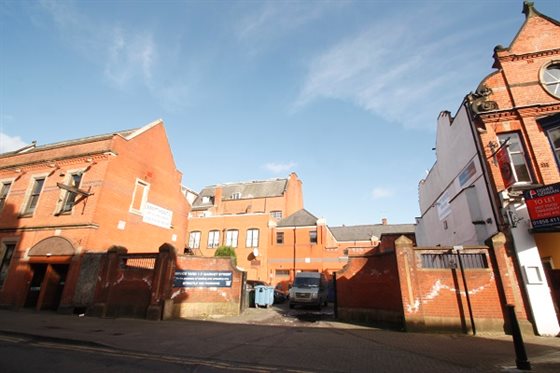
The site where the first classes were held today, in Pocklingtons Walk
There’s a gap in this story, both literal and figurative, and you’ll find it at Number 2, Pocklingtons Walk.
In the 1860s, it had been the base of hosiery dealer William Gleadow. By 1879, it was the headquarters of the Leicestershire Rifle Volunteers. Wright's Directory of 1906 lists it as the home of the thrillingly named Death and Ellwood engineers. Later it would be the corporation gas fitting department; later still, in the 1938 Goad insurance map of Leicester, it’s merely listed as stores. And some time after that it was demolished. When, exactly? Dunno. But these days it’s a service yard, several paces of nothingness behind Firebug bar and the Market Street branch of McDonald’s.
But on that otherwise unremarkable Tuesday of March 1, 1870, No. 2 became the new home of the Leicester School of Art, the institution that would ultimately become De Montfort University.
The advert for the new school had appeared in the Leicester Chronicle the previous month, beside a cure for deafness and a notice for Sanger’s Great Circus, with its quartet of “mirth-provoking clowns” and all-caps boast of SIX BEAUTIFUL BRAZILIAN ZEBRAS.
Morning classes for ladies and gentlemen will be held on Tuesdays, Thursdays and Saturdays, the ad announced, with evening classes for artizans on Mondays, Wednesday and Fridays. The school year will be divided into two sessions, it advised, each lasting five months, and the students will study the elements of geometry, shading and perspective, mechanical and architectural drawing, ornamental designing, painting from copies and from casts, artistic anatomy and landscape art.
That last discipline was home turf for the school’s new headteacher, Wilmot Pilsbury, a landscape painter and master of the West London School of Art, whom the Leicester Journal introduced to its readership as “a gentleman calculated in every way to raise the tone of art feeling in Leicester.” No pressure, then.
If Pilsbury felt the weight of expectation, it soon lifted. The school was an immediate success. In that first year it attracted 269 students, 90 more than the national average. They followed the drawing syllabus of the Science and Art Department, beginning by copying diagrams, then upgrading to freehand outlines and gradually adding the sense of depth, each progressively trickier skill an ever-more exacting test of their ability to resist sticking their tongues out of the corner of their mouths.
“I shall not easily forget my evening visit to this school, with its refined stillness, its subdued light, its absorbed students, its ever watchful, bright eyed, almost omnipresent master, whose spirit silently flowed through every moving pencil,” said the Rev. Dr Dickson, curate of St Mary’s Church, addressing the school’s first AGM in December, 1871.
“I felt as if matter were annihilated and that the spirit of beauty alone reigned there. There might be roughness, squalor, bare walls and cheerless hearths outside, but here was a little room in the heart of the town whence influences of the truest, refining and elevating character were quietly stealing forth to soften, to adorn, and to cheer.”
There’s more than a dash of sugarcoating at work in that speech. That light he alludes to? For ‘subdued’, read ‘woefully inadequate’. A building that might have been ideal for storing socks or the purposes of Mr Death was ill-suited to the study of art. It was poorly ventilated, and though the untamed sunlight which flooded in the windows in the morning might have been useful for growing tomatoes it was a pain in the neck for anyone sketching them.
Despite these limitations, Pilsbury had achieved more than he could have dared hope in his first year. Before coming to Leicester, he had wondered how many students would show up to his first class. He’d been braced for just two or three, he later confessed. As it was, he could lay claim to leading one of the largest art schools in the country, and his fledglings had submitted more than 1,300 works to the annual examinations held by the Science and Art Department in South Kensington.
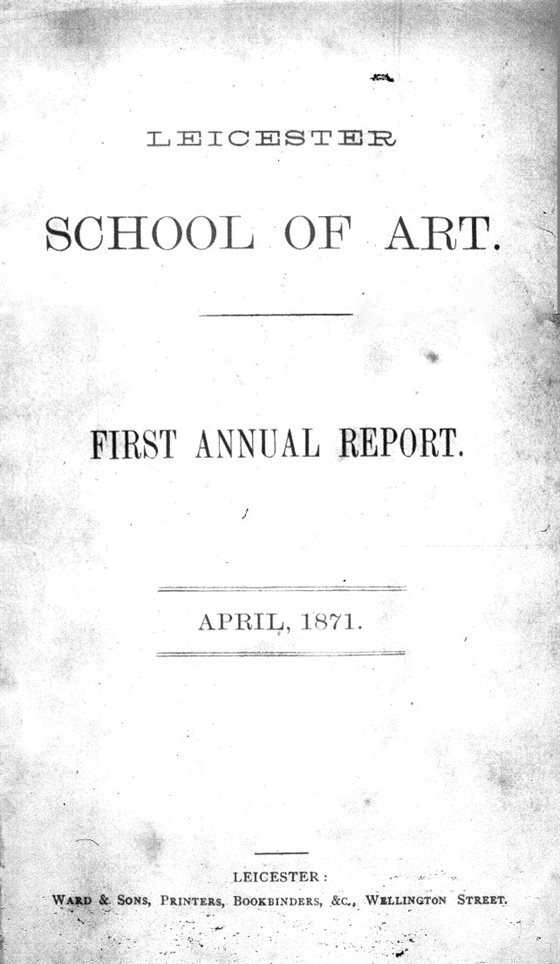
The pick of the bunch went on show at the town museum on New Walk in December 1871. If that wasn’t enough to give Wilmot a merry Christmas, the Government capped it off with a £10 bonus to mark his successful first year - the equivalent of 50 days’ wages for a skilled tradesman. It was enough money, should he have felt the urge, to buy a cow, but he seems to have put it towards a more sensible plan: in 1875 he moved into the Hawthorns, the imposing house designed and built for him by the Leicester architect Isaac Barradale on Knighton Park Road. The plans included a personal studio, with ‘exhibition lighting’, and Pilsbury himself sketched out the fiddly plasterwork beneath the eaves, which you can still see from the street.
But that wasn’t the only move on his mind. In the school’s annual report of 1872, Pilsbury had acknowledged the building in Pocklingtons Walk had been “ingeniously adapted for the general purposes of Art study” but stressed the “inconvenience of a diffused light in most of the rooms.” The following year, his tone had grown more strident: “‘The requisite space and proper lighting cannot be obtained in the present building, and I trust that one specially designed for the purposes of a school of Art will speedily be provided.”
Whether this was a wish or a demand, it was granted in 1876, when the students decamped to Hastings Street, and a purpose-built extension to the museum on New Walk. At last, the Leicester School of Art had a grand home worthy of its growing status.
Wilmot Pilsbury resigned in the summer of 1881 to spend more time with his brushes. His death, in Dorking in 1908, earned a brisk but rather brusque tribute in the Morning Post, which said his watercolours were pleasing, but unambitious.
But there was no lack of ambition at the school he had led. In 1897, the removals men returned to Hastings Street. The School of Art had merged with Leicester’s Technical School, and the newly-weds moved into a made-to-measure monolith in the Newarke. These days we know it as the Hawthorn Building: the institution that would become De Montfort University had found what TV estate agents would call its forever home.
The history of DMU: a brief timeline
1870 Leicester School of Art opens.
1882 Leicester Technical School is founded.
1897 The two merge into the Leicester Municipal Technical and Art School. Premises are built in the Newarke (now the Hawthorne Building).
1929 School is rebranded as the Leicester College of Arts and Crafts and the Leicester College of Technology.
1969 The Leicester Colleges of Art and Technology are formally designated as the City of Leicester Polytechnic.
1992 Leicester Polytechnic officially becomes De Montfort University.
Posted on Monday 2 March 2020